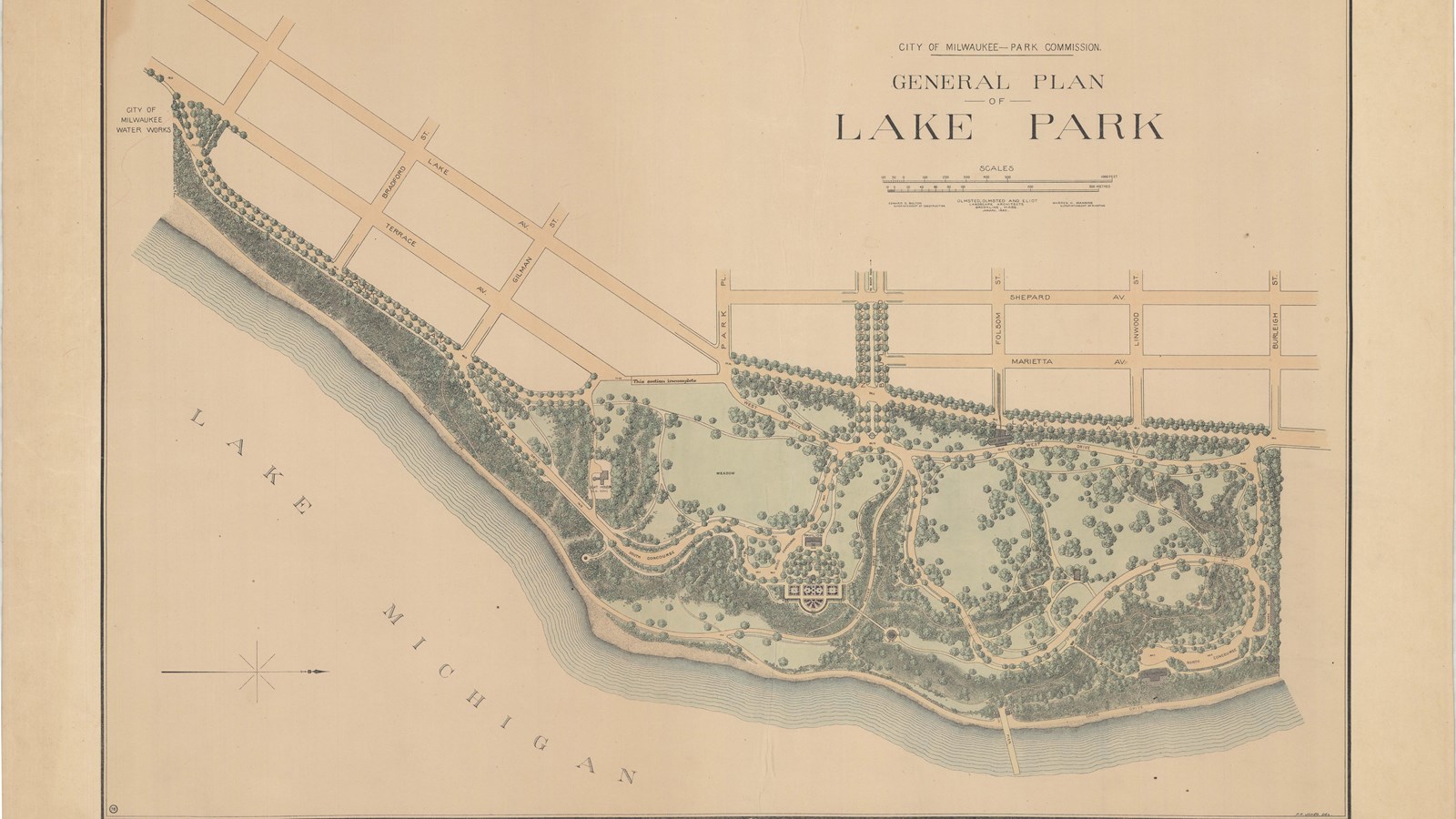Last updated: June 6, 2024
Place
Lake Park

Olmsted Archives
Quick Facts
In 1889, Milwaukee began acquiring lakefront land for a new park, asking Frederick Law Olmsted to help with the design. Olmsted agreed, as he was close by in Chicago planning the grounds for the World’s Columbian Exposition. Olmsted believed that greenspaces should be emphasized by the area’s best features, which for Lake Park was a forested, towering lakefront bluff cut deep by ravines.
Olmsted organized the park to provide visitors with spectacular views of Lake Michigan, with winding paths going inland and back out to the lake. Olmsted enhanced viewpoints to exaggerate distance and scale, making the park seem much larger than it is. Lake Park’s boundary is thickly planted to shut out the city and by preserving the forest and enhancing streams, Olmsted made the park seem as natural as possible.
Source: "Lake Park," The Cultural Landscape Foundation
For more information and primary resources, please visit:
Olmsted Research Guide Online
Olmsted Archives on Flickr
Olmsted Online
Olmsted organized the park to provide visitors with spectacular views of Lake Michigan, with winding paths going inland and back out to the lake. Olmsted enhanced viewpoints to exaggerate distance and scale, making the park seem much larger than it is. Lake Park’s boundary is thickly planted to shut out the city and by preserving the forest and enhancing streams, Olmsted made the park seem as natural as possible.
Source: "Lake Park," The Cultural Landscape Foundation
For more information and primary resources, please visit:
Olmsted Research Guide Online
Olmsted Archives on Flickr
Olmsted Online
